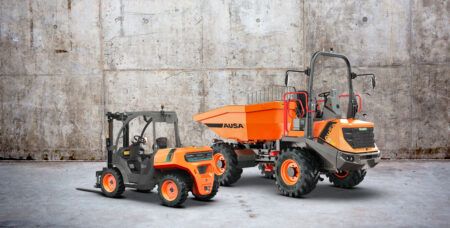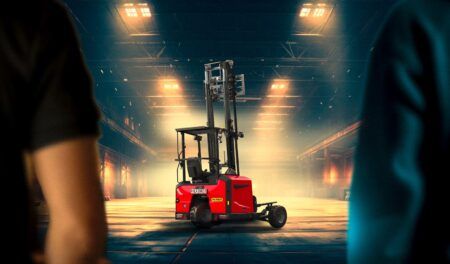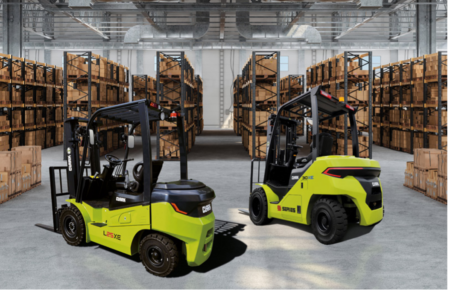Hyster has announced it is exploring the benefits of virtual reality (VR) technology as part of training to operate its vehicles. The company has developed a working immersive simulator that recreates its Fortens forklift model, so that trainee operators can quickly adjust to the vehicle’s characteristics and qualities.
The user is required to wear a virtual reality headset (360? Oculus stereoscopic goggles). Featuring the same seat as the real machine, the simulator also replicates the pedals, steering wheel, CANbus and hydraulic controls.
“Today’s forklift simulation technology provides the user with an immersive, full 3D environment combined with the actual controls and responses of a real lift truck,” said Robbert Wijnandts, commercial trainer for Hyster.
“Even the toughest operating conditions can be simulated with the virtual forklift to give a real driving experience. The resistance and feeling is almost exactly the same as the real thing, but the act of moving loads is of course in a risk-free ‘gaming’ environment.
“There are many uses for this technology deployed in the right way for the right businesses, from introducing people to the driving experience at an event, through to integrating it into training programmes.”
Three training stages
To operate a lift-truck in a live environment, there should typically be three stages to the training, beginning with Basic Operator Training (learning the basics about controls, hydraulics, safety etc.) followed by Specific Job Training (related to the equipment they will actually be using, and any attachments) and lastly, Familiarisation Training, where the operator is introduced to the actual live operation for the first time.
“Lift-truck simulators can aid and assist basic training but should never be considered as a replacement for this essential stage,” explained Nick Welch, technical director for RTITB, the preferred workplace transport training accrediting body.
“However, they can have a place in specific training (as described in ACOP L117) and would add great value to the process. The other area where simulation can add significant value is in the assessment of an existing operator’s ability and competence.”
Simulation can also be used to find new potential drivers and give familiarization training to warehouse operatives, supervisors and managers, providing greater awareness of what drivers can see, and educate about risk. It can also help with more regular refresher training, with the introduction of new safety initiatives, and in dealing with issues such as complacency and bad habits.
October 13, 2017




